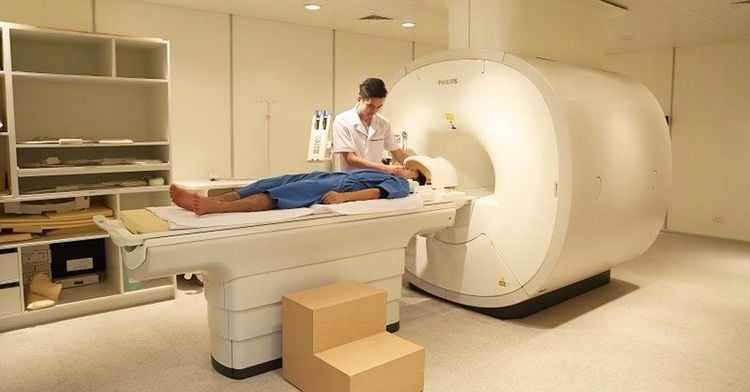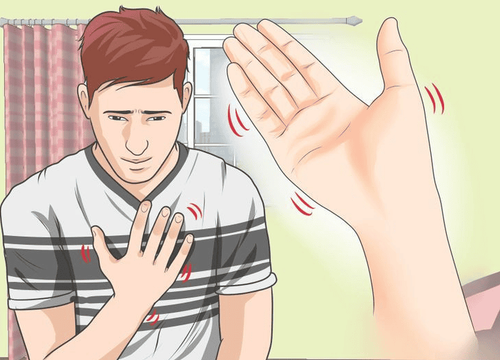This is an automatically translated article.
Chronic subdural hematoma is a hematoma that forms in the subdural space for a long time (at least 3 weeks), it usually occurs as a result of a head blow or concussion that injures and causes bleeding from the head. blood vessels near or in the subdural space. Blood collects in this subdural space, gradually accumulating, compressing the brain parenchyma. According to WHO, chronic subdural hematoma is common in elderly people aged 60 years and older, but it can also be seen in children due to head deformity at birth.1. Why are the elderly at high risk for chronic subdural hematoma?
The elderly are at high risk for chronic subdural hematoma, which is caused by:The blood vessels in the cerebral cortex of the elderly become weaker, making them more susceptible to injury and bleeding. On the other hand, with age, the brain of the elderly will shrink, causing the distance between the brain parenchyma and the skull to increase, this puts a strain on the blood vessels and when the head is injured, it will make them vulnerable. and cause bleeding.
2. Symptoms of chronic subdural hematoma
Symptoms of a chronic subdural hematoma usually don't appear until about two to three weeks after a head injury, possibly several months after the injury.In practice, it's usually minor trauma or the patient forgets to have had a head injury. More specifically, this disease can occur in older people taking anticoagulants, or people who drink alcohol.
Symptoms tend to increase gradually. Common are loss of appetite, nausea and/or vomiting. Headaches are very common and get worse. Patients may notice gradual weakness of limbs on one side of the body, difficulty speaking, visual disturbances. There may also be increased drowsiness, confusion, or personality changes. Occasionally seizures may occur.
Symptoms of chronic subdural hematoma are easily confused with other diseases such as dementia, cerebrovascular accident, transient ischemic attack.
3. Treatment of chronic subdural hematoma

Một số thuốc được sử dụng trong điều trị nội khoa bệnh máu tụ dưới màng cứng mãn tính
Craniotomy: There was a time when craniotomy, circumcision, and sometimes even the inner capsule were commonly performed. Today, because other simple surgical methods are more effective, craniotomy is only indicated in some cases where the hematoma recurs many times, the hematoma closes, opening a skull hole does not resolve all the hematoma, or when the hematoma forms many separate sacs, it is necessary to open into different compartments.
Cranial drilling and drainage
Surgery most often used for patients with chronic subdural hematoma, craniotomy with or without a closed drainage system. Usually 2 drill holes are enough, 1 in the attachment, 1 just in front of the rim joint, 3 cm from the midline. Sometimes a drill hole in the lower temple is also needed. Skin openings and perforations can be converted into craniotomy if necessary. If both sides of the hematoma need to be opened at the same time, otherwise the patient may become worse after surgery due to brain displacement. The surgery can be performed under local or general anesthesia. Use anesthesia when the patient's condition is bad. Using anesthesia can be difficult when it takes a long time to remove the blood clot and stop the bleeding completely. It is possible to perform a large craniotomy, slit the pericardium with many blood vessels, and stop bleeding carefully to have a large space to place the drain. Pump out the hematoma with saline solution and suction. Rinse until clear and colorless fluid comes out. Saline can be pumped through a flexible drain to dislodge the clot at the edge of the hematoma, taking care not to cause brain damage. Many surgeons place a closed subdural drainage system after the hematoma is pumped out. A flexible drainage tube is placed in the subdural space, through a drilled hole, the tube runs under the scalp and protrudes into the skin through another small skin incision. The tube is connected to a closed drainage system, placed 10-15 cm below the head position, drained after 24-48 hours. Endoscopic technique: Using neuroendoscopic system with flexible endoscope (flexible) and microsurgical scissors, is more and more popular.
Postoperative care
Place the patient flat on the bed or head slightly lower than 20 degrees for the first few days after surgery for chronic subdural hematoma to facilitate brain expansion and seal the subdural space. Staying hydrated and taking high doses of steroids can also help with this process. However, this treatment cannot last for many days in the elderly. The drainage system should not be left for more than 48 hours. Prophylactic antiepileptic drugs can be used during the perioperative period and in the immediate postoperative period, especially when the patient already has a seizure, where surgery may induce seizures. If the patient recovers well after surgery, the CT scan should not be overused. Some patients may have little residual hematoma, which will be absorbed over time without any further treatment. More than 90% of patients have residual hematoma within 4 days after surgery. If a brain CT scan is done too soon, it can cause anxiety, even unnecessary reoperation. However, a CT scan is required if the patient does not recover well or shows signs of secondary deterioration.

Cần chụp CT nếu người bệnh không hồi phục tốt hoặc có dấu hiệu trở xấu thứ phát
Please dial HOTLINE for more information or register for an appointment HERE. Download MyVinmec app to make appointments faster and to manage your bookings easily.













